By now, you’ve no doubt been exposed to a litany of 2015 marketing predictions posts. You’ve heard how 2015 will bring the rise of [subcategory], the fall of [previous buzzword], how [new product category] will play a larger role, how Facebook will suck more for organic reach, and how Jesse Noyes will be crowned King of Content once and for all.

I mean, if that’s not the profile of a king, I don’t know what is. *cough*
While it’s fun to look ahead, I find the “look back” posts even more valuable.
Now, don’t get me wrong; I’m not someone who dwells too much on the past and lives on a small set of past successes. I like to think of myself as progressive. But in order to be truly progressive—to build and improve upon what’s come before—it’s important to understand the sum of parts equating to the present moment. So that’s what I’ve done.

You didn’t know you signed up for a philosophy class here, did you?
With the New Year quickly bearing down upon us, I looked back at a year of content at Kapost.
I reviewed 400 blog posts, 20 SlideShares, 12 full-length eBooks, 30 videos, dozen of landing pages, hundreds of emails, and thousands of social posts. With that much content to review, it didn’t seem appropriate to anoint just 5-10 pieces as our “Best of the Year” or something.
Kapost’s Content Scoring helped me grade performance, yet because our content has a wide range of objectives, “success” can be measured in quite a few different ways. It gets complex quickly.
However, when looking at top performers (in a general sense) across a wide variety of metrics and content types, a few universal lessons emerged. Here are 5 of those lessons and the Kapost content assets that brought them to light.
1. Make People’s Lives Easier
The High Performers
The Complete Guide to Building Your Content Marketing Workflow (eBook)
7 Marketing Cheat Sheets You’ll Use Again and Again (Blog)
The Content Marketing Hiring Handbook (eBook)
The Lesson
Worksheets and templates have held a firm place in Kapost’s content since the early days. It’s a feature we use a lot. The content featured above includes an eBook that shredded prior lead generation goals, a blog post that is among the top 5 shared this year (and rising), and the year’s second most downloaded eBook that not only gave marketers tips on how to hire a winning team, but provides key questions to ask in the interviews, inspired by top marketers such as Joe Chernov and Jason Miller.
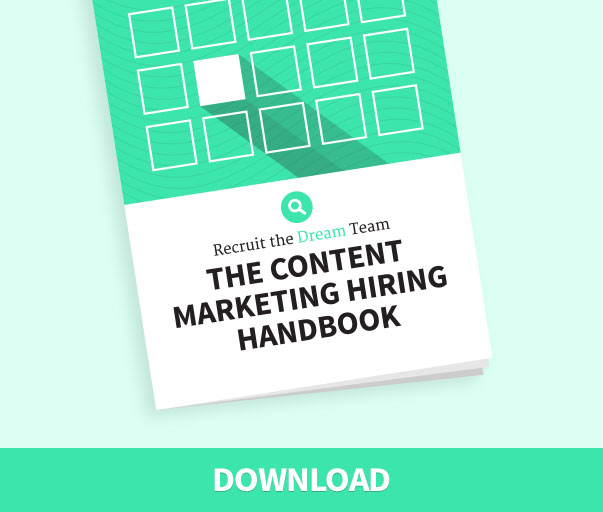
2. Take on Challenging Topics
The High Performers
How We Screwed Up a Brilliant Marketing Campaign (Blog)
Are Influencers Tired of Influencer Marketing? (Blog)
Building an Enterprise Content Marketing Framework (eBook)
The Lesson
Too often, we marketers focus on “quick wins” or “low-hanging fruit” when creating content. Those are vital parts of a content strategy, but only when they drive to more substantial content.
It’s great to excel at grabbing attention. It’s better to excel at keeping it.
As buyers progress along their process, they’re likely to have deeper, more challenging questions. The same can be said for customers as they move from the on-boarding phase to a more advanced use case of your products or services. Don’t be scared of tackling the tough questions, and providing responses to them in your content.
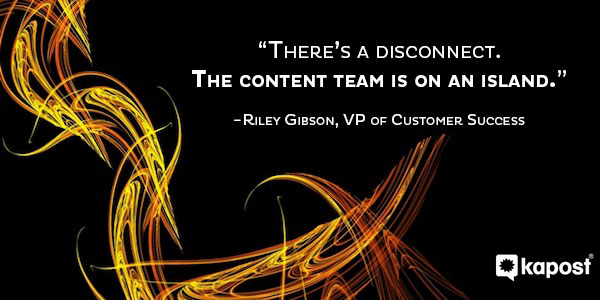
3. Meet a Need
The High Performers
The Content Marketing Hiring Handbook (eBook)
Why Content Audits Suck & A Tool That Makes Them Easy (SlideShare)
Influence Your Buyer’s Journey with Content Scoring (Interactive Infographic)
The Lesson
This is pretty much the centerpiece of modern marketing: focus on buyer-centric marketing (or customer-centric marketing). It’s all about creating content that serves a purpose to the intended audience. Our efforts need to address challenges our buyers face, and meet those challenges head on.
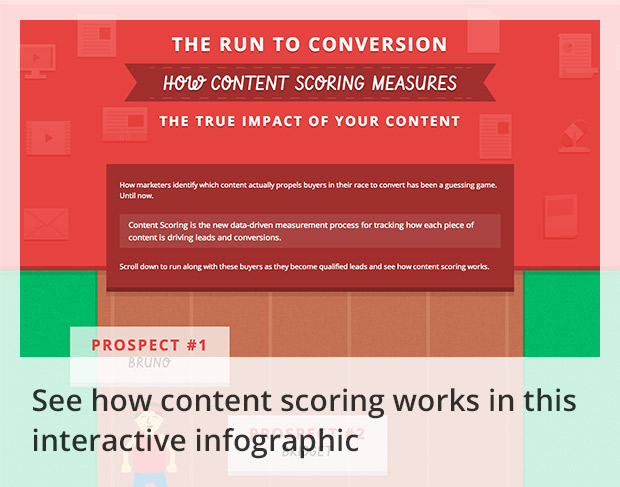
4. Recognize a Job Well Done
The High Performers
The Kapost 50: 2014’s Best Brands in Content Marketing (Interactive Microsite)
Screw PowerPoint. How to Create a Killer SlideShare with Canva (SlideShare)
13 SlideShare Masters Share Their Secrets (SlideShare)
The Lesson
Everyone likes to be appreciated for their efforts. It makes the long hours, stress, sleepless nights, and mountains of work a bit more worth it. Sadly, it’s easy to feel a lack of appreciation in the business world, even when performing exceptionally. With that in mind, content that recognizes people can be a significant driver of traffic, leads, and, not to be overlooked, good will.
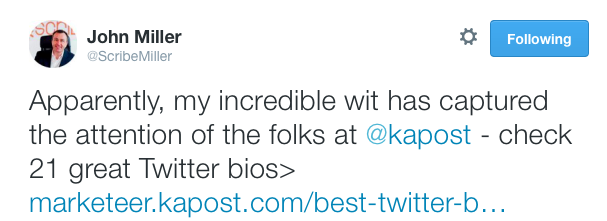
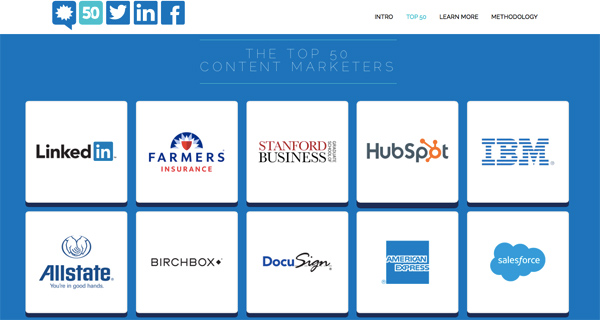
5. Have Fun
The High Performers
7 Signs You Work in Content Marketing: Now and Then (Blog)
Why Animated GIFs Belong in Your Content Marketing Mix (Blog)
What Beer and Content Have in Common (Infographic)
The Lesson
We can take ourselves too seriously when it comes to business, in B2B especially. We focus so intensely on things like goals, initiatives, obstacles, directives, complexities, blah, blah, blah. It can be a draining experience.
It’s easy to forget that we’re humans, with emotions, and so are our buyers.
Sometimes we can meet all of those serious-sounding words in that earlier sentence, and still enjoy ourselves. After all, marketing is both a science and an art. Let your creative juices flow from time to time. There’s room for that even is the stuffiest, most “boring” industries.
Okay. That’s enough learning for 2014 now, wouldn’t you say?

Yep. I’m out.

